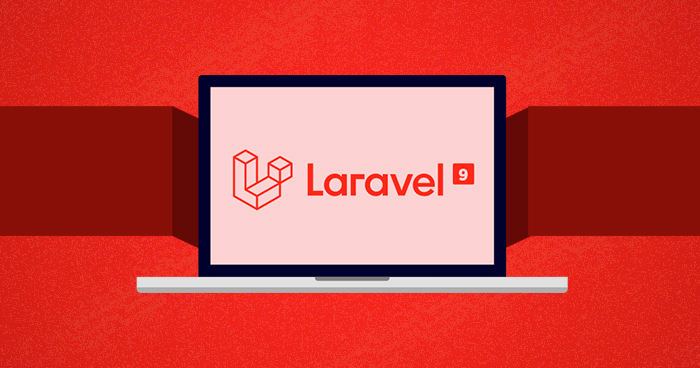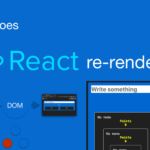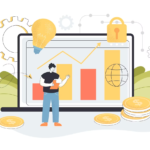The Semantic Versioning methodology is followed by Laravel and its first-party packages. This means that major updates to the framework are released once a year in the first quarter. In the meantime, minor updates can be released as needed. The most recent version of the framework, Laravel 10, was released on February 13, 2023, and it includes exciting new features and updates. Beforehand, another Laravel rendition was delivered like clockwork. However, the core team switched to an annual release schedule following the February 2022 release of Laravel 9:
- Laravel 9: February 8, 2022
- Laravel 10: February 13, 2023
- Laravel 11: February 6, 2024
The official Laravel News Page states that Laravel 9 will receive scheduled security and bug fixes until February 6, 2024. In the meantime, Laravel 10 is anticipated to receive security and bug fixes until February 4, 2025.
What’s New in Laravel 10: Latest Features and Updates
When referring to the framework or its components in an application or package, it is recommended to use version constraints like “10.0” because the core team behind the framework is always working to bring its users the best possible experience. This is due to the possibility of significant updates and modifications in later versions. Additionally, the current version of Laravel 10 includes a number of significant enhancements that will be beneficial to owners of products. Let’s examine these modifications in greater detail:
PHP 8.0 Support Dropped
Laravel 10 no longer backings PHP 8.0, and you should move up to PHP 8.1 or 8.2. Despite the fact that updating your Laravel applications to the most recent version of Laravel as soon as it is released is not necessary. Be that as it may, exhaustive testing is as yet suggested, particularly for projects with paid clients or workers. Additionally, Predis v1 support has ended, as has PHP 8.0 support, and you must upgrade to Predis v2.
Introduced Laravel Pennant
The Laravel Pennat is a lightweight and easy-to-use feature flag package that makes it simple to add new features to your application. It incorporates A/B test interface configuration, upholds trunk-based improvement procedures, and the sky is the limit from there. Using feature flags, you can turn on or off a feature at runtime without changing the code.
Easy Process Handling
For the Symphony Process component, Laravel provides a straightforward and extensive API that makes it simple to run external processes within your Laravel application. The development experience is greatly enhanced by this process functionality, which addresses typical use cases.
Invokable Validation Rules by Default
When creating a new Invokable rule in Laravel 9, the –invokable flag had to be added after the artisan command. However, in Laravel 10, you can easily create a new Invokable rule by running the following command:
PHP artisan output: rule CustomRule
In addition, the boilerplate code is straightforward and simple to understand, making it less intimidating for developers to develop their very own individualized validation rules.
Application Skeleton Code with Type Declarations
In the past, DocBlocks were used in Laravel’s skeleton code to clearly explain a particular code’s function and the responses or parameters it returns. However, all user codes within the framework will now include type-hints and return types thanks to the most recent Type Declarations. The core framework’s backward compatibility is unaffected by these enhancements, which add additional benefits. Method Arguments, Return Types, removing unnecessary annotations whenever possible, excluding the Types property, and permitting users to access closure arguments are all included in this.
Removed dispatchNow()
The “dispatchNow()” method was deprecated in Laravel 9 and has since been replaced with “dispatchSync()” in Laravel 10. It is fundamental to supplant it in the entirety of your current tasks, as it is a breaking change, however the arrangement is straightforward.
Deprecations from Laravel 9
The team is gradually eliminating out-of-date methods from Laravel 9 in the Laravel 10 branch as part of the most recent Laravel update. The documentation contains the updated Laravel upgrade procedure documentation, which includes a list of all deprecated methods and packages. To achieve the desired result, developers who intend to upgrade their projects to Laravel v10 will need to rewrite their code using a new approach. The following are some of the changes that were moved from the 9 branch to the master branch:
- The Route::home method, which was deprecated in Laravel 9
- The getBaseQuery method, which has a toBase equivalent
- The MaintenanceModeException class, is no longer in use
- The MocksApplicationServices trait
- The Mail::failures method in the mail fake
- A recommendation to use $casts instead of the deprecated $dates property
- The assertTimesSent() method
- Support for Predis 1 and doctrine/dbal 2 are no longer available
- All related deprecations in doctrine/dbal since Laravel has dropped support for version 2.
Why Should You Upgrade to Laravel 10?
It’s important to remember that Laravel is an open-source framework, so you own the codebase each time you install a new instance on your device. Your app will continue to function even if your version is no longer supported. However, you will be accountable for your own version maintenance. Stability should take precedence over upgrading the framework. Consider moving up to Laravel 10 provided that:
- Your current Laravel app is stable and functioning properly.
- The upgrade will bring a necessary feature or resolve a critical bug that will enhance the performance of your app.
- You have thoroughly tested your app before implementing the upgrade in the production environment.
How to Upgrade from Laravel 9 to Laravel 10
Laravel 10.x Shift will make it simple to upgrade your existing Laravel application to the new version with the official release of Laravel v10. Upgrading from Laravel 9 to Laravel 10 can be automated with this tool, saving you up to two hours of time. It is essential to keep in mind that both Laravel and Laravel 10.x Shift will receive regular updates, and Shift users can request a rerun in the event that they require one.
Requirements
To update your ongoing Laravel application to Laravel 10, a couple of fundamental prerequisites should be met:
Your Laravel application must be running on Laravel 9 or higher. Your server must be running PHP 8.1 or higher.
Core Upgrades
The Shift automates many of the upgrades described in the Laravel Upgrade Guide, such as: Adding PHP-type hints to the Laravel app, changing the deprecated $dates property to $casts, updating the core dependencies for Laravel 10 and PHP 8.1, removing redundant typing in PHP DocBlocks, and detecting deprecated code in the app code.
Additional Upgrades
The Shift provides additional upgrades not mentioned in the Laravel Upgrade Guide in addition to the core upgrades, such as:
Modernization of PHP sentence structure, including the utilization of the invalid safe administrator and short clusters
Capacity to apply your favored code style
Reception of tuple sentence structure and class-based courses
Transformation to mysterious movements
Computerized changes expected for PHPUnit 9
Change of Faker property admittance to technique calls
Updates to config records to mirror the Laravel 10 adaptations
Expanded reliance limitations for well known bundles.
Manual Upgrades
despite the fact that the Laravel 10.x Shift aims to automate as many upgrades as possible; It’s possible that some updates cannot be carried out automatically. In such instances, it finds these updates and includes detailed instructions for manual implementation in the form of comments in the pull request.
Even though the Shift tries to find and automate upgrades for common dependencies, it might still need to be done manually. To ensure a successful upgrade, it is recommended that the changelog be reviewed for dependencies and any additional changes.
Conclusion
Our discussion of Laravel 10’s new features, updates, and requirements comes to an end here. We hope this blog post has given you a good understanding of the most recent framework version. In any case, in the event that you are an entrepreneur, uncertain about updating your current Laravel application to Laravel 10, or on the other hand assuming you are thinking about another undertaking and keep thinking about whether Laravel is the right answer for your necessities, Recruit Laravel Improvement Organization like Webworx Tech. Our group of specialists will direct you through each step of your web application advancement venture, lightening any pressure or concerns you might have.



